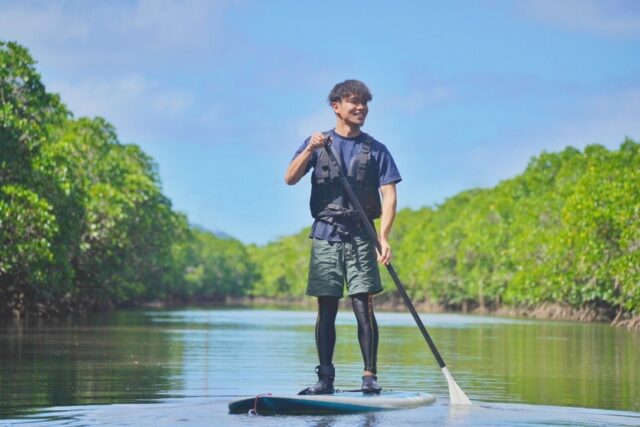Local Column
COLUMN
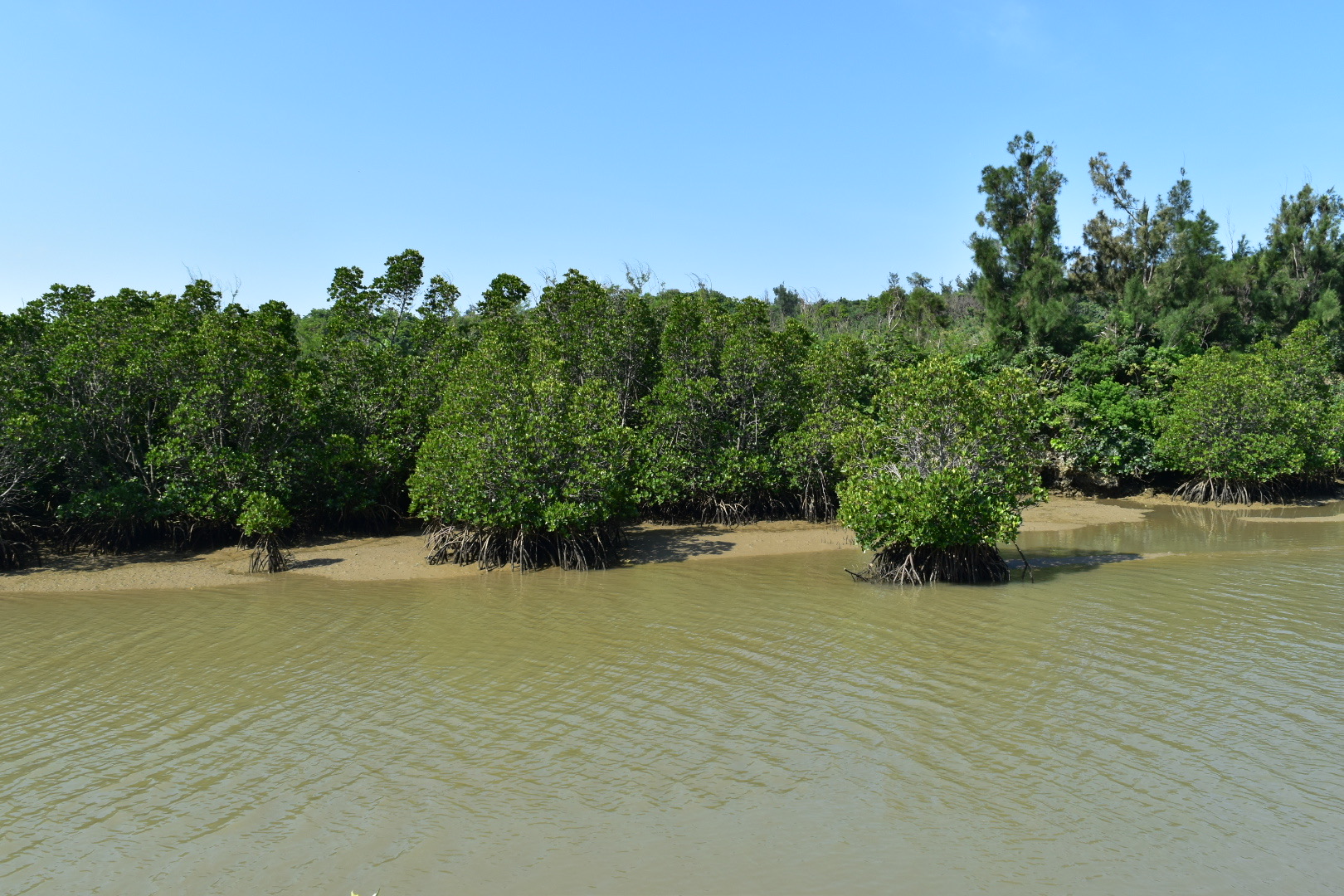
Miyakojima Mangrove
1. what are mangroves?
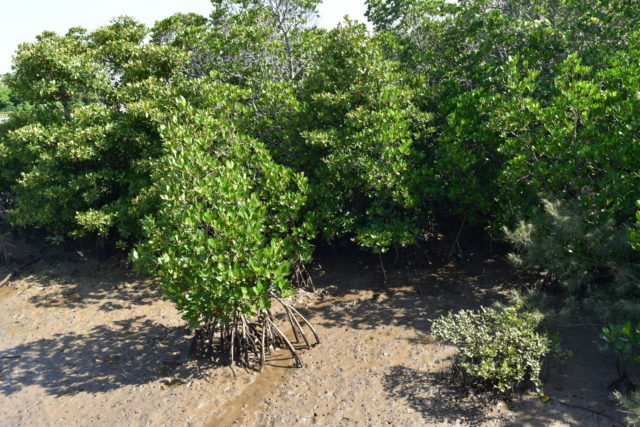
What is a mangrove?Although often misunderstood, mangrove is a general term for plants that grow near the mouths of rivers where seawater and freshwater mix, and is not the name of a specific plant.
Generally, mangroves grow on land that is flooded with water.
Miyako Island has no rivers flowing into the sea; instead, there are many underground water vein outlets near the coast.
The mangrove forests of Miyakojima have continued to develop in a way that is unique to the island, growing in clusters around them.
In mangrove forests, trees grow so densely together that their roots and branches intertwine with each other, forming a characteristic surface structure.
Because the intertwined roots and branches serve as shelter for a variety of animals, mangrove forests are home to many creatures such as crabs and birds, creating a rich ecosystem.
Mangrove plants can spread their roots into salt water where trees normally cannot grow naturally.
So how does one enable it to grow wild in salt water?
There are two features of mangroves that solve this problem.
(First) Root Mechanism
Mangrove roots have a mechanism to control the inflow of salt.
This allows only fresh water to be assembled and flushed from salt water.
(Second) Leaf Mechanism
Mangroves can pass through salt-blocking mechanisms in their roots and salt accumulated by direct sea breezes can accumulate in their leaves.
By defoliating leaves that have accumulated salt, the mangroves themselves are prevented from accumulating salt.
In this way, mangroves have adapted themselves to their environment so that they can survive in harsh conditions.
In addition, mangrove seeds germinate where they drift, with some of their fruit falling down as they grow, being carried away by water currents or pierced by mud.
Shimajiri mangrove forest
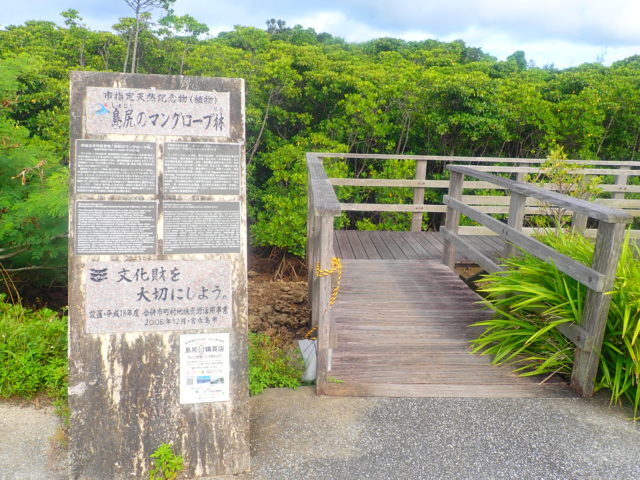
The largest mangrove forest on Miyako Island is the Shimajiri Mangrove Forest.
It is located in the northern part of Miyako Island, in front of Ikema Island.
From the parking lot, there is a boardwalk that leads directly to the mangrove forest. Although it is a boardwalk, it is a wooden walkway, so it is recommended that visitors wear comfortable shoes and clothing, not pin-heels or other shoes that are hard to walk in.
Also, since there is no shade near the Shimajiri mangrove forest, it is a good idea to bring a hat, sunglasses, or other sun block and sunscreen.
The trip from Miyako Airport takes about 20 minutes by car.
However, it takes about 10-15 minutes each way to walk the boardwalk from the parking lot to the mangrove forest.
Therefore, it takes up to 30 minutes for a round trip, so it is advisable to plan your schedule well in advance for sightseeing and other activities.
The major attraction of the Shimajiri mangrove forest is the variety of mangrove species it contains.
All mangroves on Miyako Island, including "Yaeyama Hirugi," "Ohirugi," "Mehirugi," "Hirugi damashi," and "Hirugimodoki," can be seen in the Shimajiri mangrove forest.
Sea activities are also popular among tourists.
Canoe and kayak tours are available throughout the year to enjoy observing the mangroves and aquatic life, and you can also observe the mangroves from a closer distance.
Tour start times are in the morning or afternoon and reservations are required.
Kawamitsu Upkar
Another mangrove community on Miyako Island is the Kawamitsu Mangrove.
Although much smaller than Shimajiri, it offers a creative sight of mangroves spreading out in a spring-fed waterway that empties into Yonaha Bay.
Upukā" generally refers to a "big river," and even in Kawamitsu there are many springs, and the village has developed supported by the river and its waters.
Kawamitsu Mangrove is located not far from Miyakojima Airport on National Route 390.
Mangroves such as "Yaeyama Hirugi", "Ohirugi", and "Mehirugi" have been identified in Kawamitsu Upukar.
It is also a spot where you can see butterflies such as the giant sesame butterfly, wild birds, and various other creatures living in harmony with the mangroves.
Along the boardwalk surrounding Kawaman Upkar, there is a viewing deck and pavilion, as well as benches and tables, so that visitors can take a stroll while viewing the mangroves and take a break if they are tired.
The boardwalk turns into a stone path in the middle of the road, but be careful, as it sinks into the water at high tide.
Also, please note that it is slippery after rain.
2. what are the types of mangroves?

In the mangrove forestIf you know the time of low tide on the day you visit, it is recommended to visit around that time.
This is because it is possible to observe the mangrove footprints that emerge as the tide recedes and the interesting organisms of the mudflats.
On the other hand, around high tide, you can see completely different scenery, such as mangroves immersed in water and shimmering.
Also, before visiting a mangrove forest, it is helpful to learn what kind of mangroves can be seen so that you can enjoy the experience more when you actually visit.
Here are some of the types of mangrove forests.
0 Yaeyama hirugi
The roots emerge like octopus legs from the base of a single trunk, and the tips of the leaves are spiky.
The trees are 4 to 8 meters tall and grow on the seaward side of mangrove forests.
Celastrus orbiculatus
It is 5 to 10 meters tall, and its name comes from its masculine appearance.
It has roots above the ground and small red flowers when in bloom.
The salt from the seawater that is sucked up can be collected on the leaves, which absorb the salt and turn yellow, causing the leaves to defoliate.
It grows relatively landward among mangroves and is characterized by the appearance of roots called knee-roots above the ground from roots below the ground.
This mangrove is listed as Endangered II VU.
Corbicula leana (species of basket clam)
The tree is 2 to 5 meters tall, and its name comes from its neat and neat shape.
It grows on the landward side of the mangrove and has distinctive plate roots.
It is somewhat more cold hardy than other mangroves and can grow in areas with higher longitude than Okinawa, such as Kagoshima Prefecture.
Like the mangrove, the mehirugi is also a semi-endangered mangrove species.
Celastrus orbiculatus
It is not a member of the hirgitaceae family, but a close relative.
It was named hirugimodoki because it resembles hirugi.
The tree is 2 m to 4 m tall, has brightly colored glossy leaves, and can be established in sandy soil.
This mangrove prefers to grow in the hinterland in colonies.
Its roots are horizontal and it is listed as an endangered species IIA.
0hrnian worm
The tree is 50 cm to 2 m tall and, like hirugimodoki, is not a member of the hirugi family but is closely related.
It is characterized by the production of bamboo shoot roots that resemble disposable chopsticks, and it grows on the seaward side of the mangrove.
It is listed as Endangered I B.
.
Zebrasoma flavescens (species of goby found in Japan and Palau)
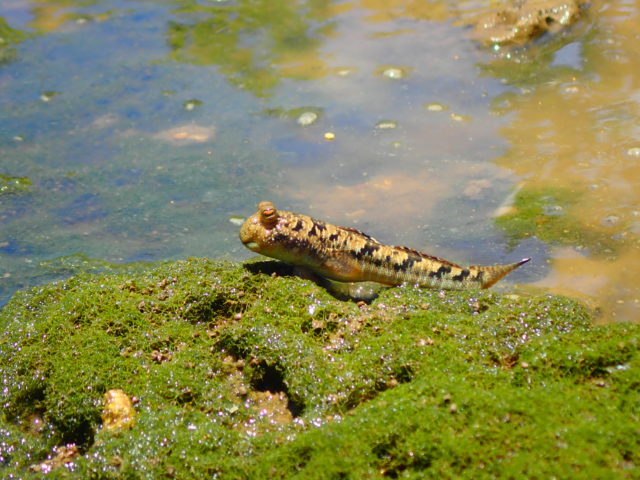
Locals call it "tonton-mi," a member of the goby family.
The fish has large eyes and is about 10 cm long. It is adorable as it moves about, skipping along on the mud.
Zebrasoma flavescens (species of Pacific wildebeest)
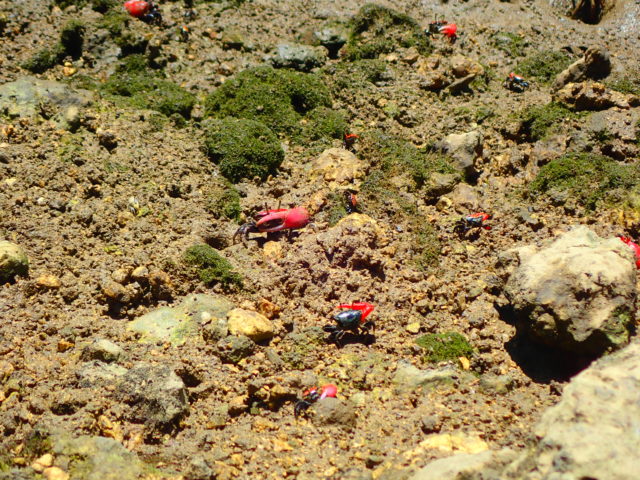
It is a crab with a red body.
At the first sign of human presence, they all hide at once in their mud holes, but after a few moments of quiet, the benishiomane mushrooms gradually emerge, revealing red dots here and there on the ground, as shown in the photo.
Cirrhoscyllium japonicum (species of sandpiper)
This is another crab species, which was found to be a new species in March 2020.
The male of the Blue-breasted Nuthatch has a larger scissors on one hand.
The larger the scissors, the more popular they are with females.
Hemigrammocypris rasborella (species of cyprinid crab)
Like the southern striped mantis, this is also a crab that turned out to be a new species.
Although crabs are imagined to be moving horizontally, the rice cracker crab can walk not only horizontally but also vertically.
When people approach, these crabs hide in the mud all at once, but if you watch quietly for a while, they gradually emerge.
Corbicula leana (species of basket clam)
It is edible on Miyako Island.
Known as "Watarigani" in some regions, this crab is widely found from Hokkaido to Miyako Island.
3. vicinity
00 parantou
Shimajiri is famous for its "Pāntu" festival, in which people dressed as gods with mud all over their bodies walk around the village and smear mud on the villagers.
Various goods are sold at the Shimajiri purchase store in the village.
It is said that the person who is covered with mud will fall from misfortune and good luck will come to him or her in this festival.
It is a rare festival in Japan that takes place around the beginning of September in the lunar calendar, so why not visit?
Conclusion
Numerous plants and organisms can be seen in the mangrove forests.
It is highly recommended as a spot where you can feel the magnificent nature.
When you travel to Miyako Island, you can enjoy the Shimajiri mangrove forest andWhy not visit Kawamitsu Mangrove?

